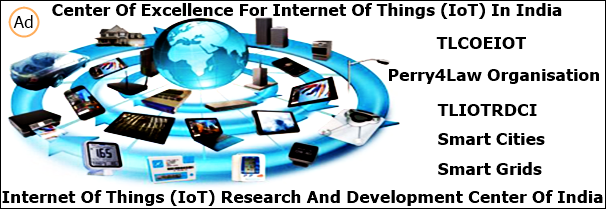Internet
of things (IoT) is the new buzz word these days. Everybody is talking
about IoT because it has great business, commercial and personal use
potential. IoT combines software, hardware and a communication
infrastructure so that systems/devices can contact and communicate
with each other in a non intrusive and automatic manner.
Like
any other technology, IoT has its own used and challenges. For
instance, IoT can be used for smart grids, smart cities, e-health,
etc and thereby reduce their cost of operation and improve their
productivity. However, IoT also has civil liberties and cyber
security challenges to manage. Cyber criminals have already started
abusing IoT controlled devices for launching malicious cyber attacks.
As the technology protocols for IoT are still evolving, it is very
difficult to avoid such cyber attacks.
Similarly,
on the legal framework front, IoT has yet to be suitably regulated
around the world. India has no dedicated law for IoT and some
guidance can be found from the Information Technology Act, 2000 (IT
Act, 2000). Indian government has issued the draft IOT
Policy of India
(pdf) and Revised
Draft IOT Policy of India
(pdf) but they are
not sufficient to manage the complicated techno legal issues of IoT.
IoT
is essential part of Digital India project of Indian government that
is already heading towards rough
waters in
the absence of adequate cyber
security and
civil
liberties protections.
For instance, ensuring of cyber security for smart
grids and
smart
cities is
still a distant dream for Indian government. Similarly, IoT and Smart
cities have to manage civil
liberties issues
as well that are
presently ignored by Indian government.
Perry4Law
Organisation (P4LO)
has launched
a dedicated and
exclusive techno legal centre
of excellence (CoE) for Internet of things (IoT) in India.
We have covered many techno legal issues there that Indian government
is required to manage in near future. We have been managing these
issues for long and we would discuss the same at our CoE-IoT
website in
more details in our subsequent posts.
P4LO
would help national and international IoT stakeholders in formulation
and implementation of techno legal frameworks so that adoption and
use of IoT can be as smooth and hassle free as possible.
















